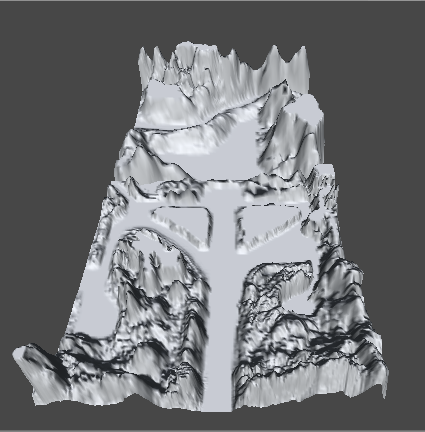Scenography is basically everything that is brought together to establish an atmospeher and mood. So usually where you place things is going to set the scene for example let's say a horror. This is crucial as without the environment and the correct placements of things things can look off and take away the realism and focus from the scene. Let's look at dead space, dead space's environments set the scene so well, everything is long corridor's small spaces or when your in a large space everything is bigger than you and positioned well to give a feeling of dominance and fear. The lighting is fantastic and come together with everything else to set the mood. Sound plays a fantastic role too creating suspense and many many jumps! I've learned to focus more on bringing all these things together to create a better sense of realism and spark more emotion for the gamer in the environment. Here's some screenshots of gameplay and art work from deadspace -






also i found this on a website, fantastic passage here about -
The relationship between scenography and architecture
It was in this way that the relationship between scenography and architecture was forged. The annotation is identical in both cases: scale drawings of a plan, section and elevations, and often scale models. Architecture has always historically been expressed this way, and scenographic concepts must ultimately be represented in the same manner. The essential difference, of course, is that the stage is a fictional universe, a neutral space for imagined places. Even the most distorted early perspective sets are obviously plan-driven.
The modern theatre owes much to its historical and traditional connections with architecture, and lighting and sound design have been tossed into the mix because technology has made it possible to control and reproduce them, along with set and costume design. These four separate but inter-related disciplines are included in producing the scenography.
The director is involved throughout, but the look and feel of the performance is ultimately the result of a collective creative process. This idea of a design committee is taken literally in many contemporary European theatres and is often the practice in Montreal theatres - wherein no individual design credits are given, and the scenography is signed collectively by a group of “conceptors” (concepteurs). Historically, conception has been a reference to the set designer. This is the traditional usage, common in western Europe and America, along with specific credits given to costume, lighting and sound designers. This is normal, in that usually it is the set designer who first gives an architecture to the space of the stage.
So it is that the term “scenography” has evolved from its historical antecedents in classical antiquity and its connection to the architects of the Renaissance. Largely due to the theatrical activity in Eastern Europe in the twentieth century, it has broadened its meaning to i nclude all of the elements that contribute to establishing an atmosphere and a mood for a theatrical presentation.
Here's the website from the above and another one about scenography -
http://theatredesigner.wordpress.com/articles/theatre-design-scenography/what-is-scenography/
http://www.artsalive.ca/collections/imaginedspaces/index.php/en/learn-about/scenography





















































